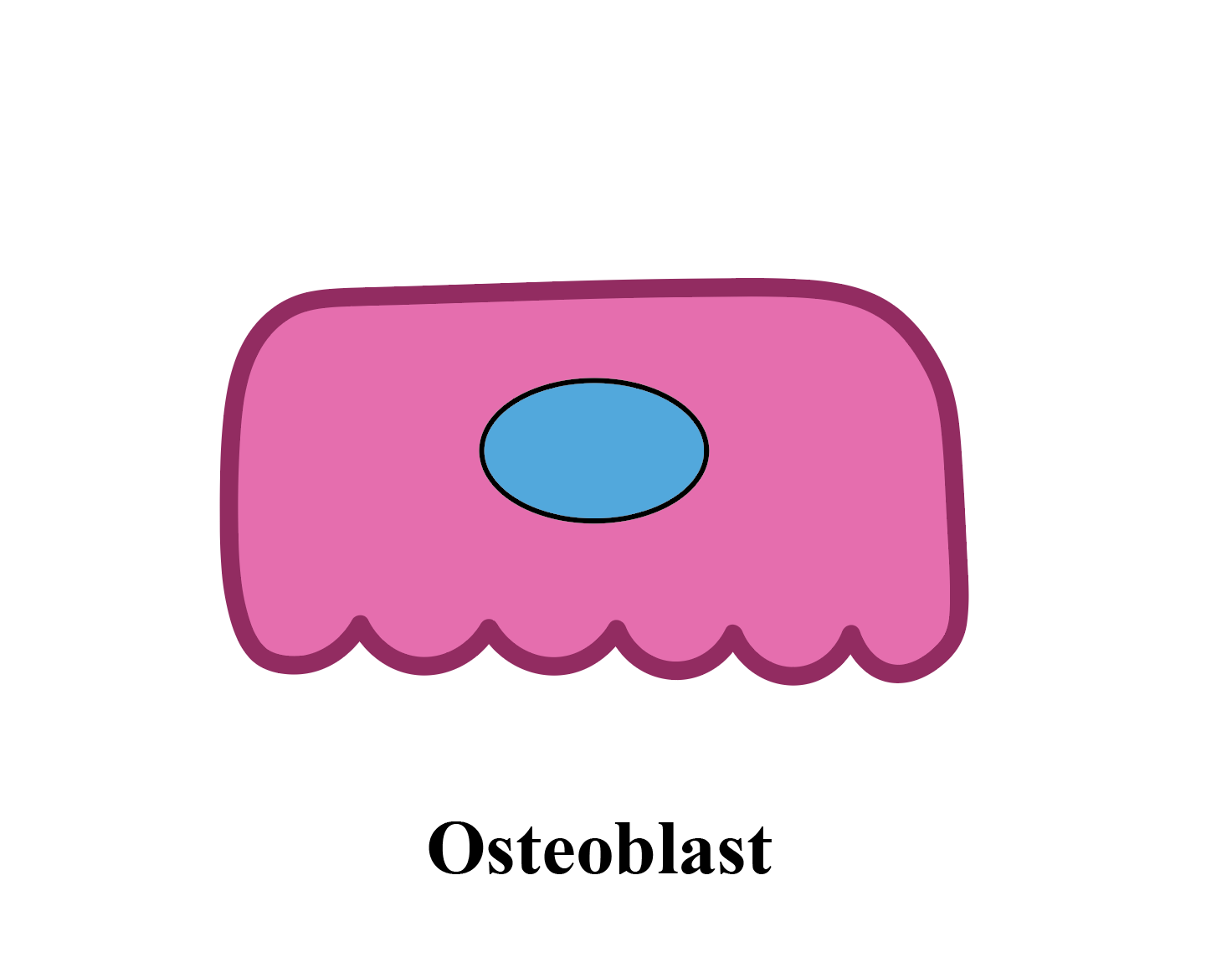Bone Cell types
Bone is commonly thought of as a strictly structural component of our bodies, providing support and protection. It is in fact a living organ system that is constantly changing. Changes in bone size, density, and organization are controlled by the cells that are a part of bone. There are four different types of bone cells, each with distinct roles and characteristics.
Osteoblasts
Osteoblasts are the creators of bone. They are actively dividing cells on the surface of bone that secrete the matrix that constitutes the non-living parts of bone. Osteoblasts are polarized, with one side of the cell looking different than the other. You can think of them as an octopus, able to release ink (bone matrix) from their underside when directed. Osteoblasts help to make bone more dense and strong and integrate minerals into the bone matrix for long term storage.
Osteoclasts
Osteoclasts are the cells that break apart bone. They can create small pockets of acid close to the bone surface, dissolving the mineral matrix. This action can be very useful when it is regulated well. Resorption paired with formation allows bone to reorganize its structure, adapting to changing environments like during a growth spurt. Bone resorption can also help provide minerals to the rest of the body if we aren’t getting enough from our diet or need extra during lactation. However, when osteoclasts are not well regulated, and their dissolving of bone outpaces the formation by osteoblasts, you can end up with brittle bones that break easily, like what happens to a lot of people when they reach an advanced age.
Osteocytes
The cell that makes up 90-95% of all bone cells, and the main focus of the Lewis lab, is the osteocyte. Osteocytes are old osteoblasts that retire inside the mineral matrix of bone. They carve a little cave for themselves and then start telling other bone cells what to do for the next 25 years. Osteocytes are the resident mechano-sensors in bone, translating mechanical signals into biochemical messages that direct the actions of other bone cells. In response to exercise (increased tissue deformation), osteocytes signal osteoblasts to activate and form new bone. In response to bedrest (decreased tissue deformation), osteocytes signal osteoclasts to break down excess bone. Considered the conductor within bone, osteocytes can achieve a high level of communication between cell types via their vast interconnected dendritic network, similar to neurons in the brain. But osteocytes are not just signaling cells, they are also able to perform micro-renovations within their individual niches in bone, releasing minerals into the body; with their large population and high surface area, this can have a huge and rapid impact on circulating mineral levels that are normally bound up in the matrix of bone. For this role in mineral homeostasis, osteocytes interact with distant parts of the body such as the kidney, helping to regulate the balance of important minerals like calcium and phosphate. Even with all its roles, the osteocyte story is still unfolding, and research is very much ongoing. Keep an eye out for updates from the Lewis lab!
Bone Lining Cells
Honestly the most boring of the bone cells are called bone lining cells. These cells are alive but inactive osteoblasts that cover bone surfaces. They don’t form or break down bone, but they are still connected to the osteocyte network. They do have a role in helping osteoblasts retire into osteocytes, so maybe they can be thought of as the bone AARP agents? But you never know! Up until a few decades ago osteocytes were thought to be simple placeholder cells, so don’t count out bone lining cells yet.



